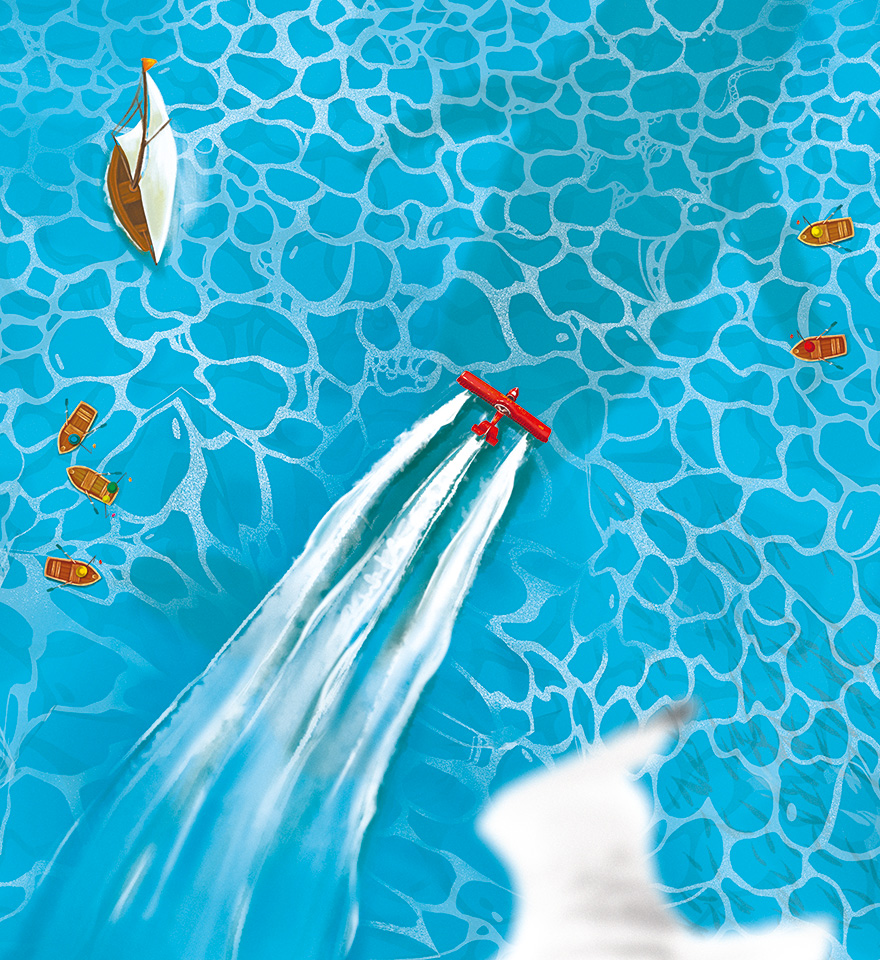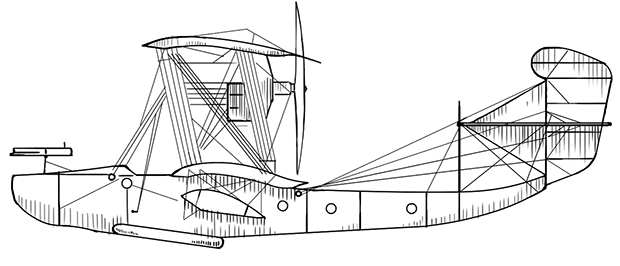GrygorovychDmytro
February 6, 1883, Kyiv, Russian Empire (now Ukraine) —
July 26, 1938, Moscow, USSR (now Russia)
Hydroplane
It seems that at the beginning of the 20th century it was useless to look for a better place in Kyiv like the Aeronautic Club in Kyiv Polytechnic institute. Only here it was possible to see and communicate with Fedir Anders, a designer of the first Ukrainian civil airship, Ihor Sikorsky, a creator of the first multi-engine aeroplane and a helicopter, Fedir Tereshchenko, a founder of the Aeroplane plant, Kostiantyn Kalinin, an inventor of an elliptic wing, and Dmytro Grygorovych at the same time. Who was he and how did he manage to join the star team?

In 1902 Grygorovych entered Igor Sikorsky Kyiv Polytechnic Institute mechanical department and before graduating from it, he went to the Belgian city of Liege, where he studied аerodynamics and engine theory during two additional terms. And, of course, he attended the club where students not only exchanged their ideas but also worked on the airframes of real planes. His wife remembered that from 1909 their room was full of mechanical parts, elements of a motor and different details of the gear. At the Kurenivka airfield, Grygorovych rented a shed and turned it into a hangar. At the beginning of 1910, his first sport biplane with 25 horsepower was flown and soon two more biplanes were made with the financial support of Tereshchenko, at his workshops in Chervone village.
But Grygorovych thought more and more not about land planes but about those, which would be able to take off the water and ditch, he even started to design such ones. A lucky chance helped him to bring his idea to life.
In 1912 Grygorovych, who moved to St Petersburg, became a Chief Technical Officer of The First Russian Aeronautical Society Plant. Almost at the same time, the Russian Navy bought the apparatus Donnet-Leveque in France, the French were the first in Western Europe who had made a flying boat. But during the training flights in 1913, it was broken by Lieutenant Pavlo Ernestovych von Lipgart: it fell into the water from a height of 50 metres. While tossing the speed the plane hit the water and the lower section of it was damaged. As it happened, Lipgart had to fix the flying boat at his own expense. Several plants wanted to be paid a huge price for repairing — about 6000 roubles, but at the plant where Grugorovych worked, the plane could be repaired for symbolic 400 roubles. The designer persuaded his superiors to go for it to have a possibility to learn the plane’s construction because he wanted to start working on his own seaplane. They say, the military suggested purchasing these “flying boats” from domestic manufacturers in case of successful launching of own model.
Eventually, the Donnet-Leveque was repaired quickly and by the end of December, The assembly of Grygorovych’s model was completed. The seaplane’s tests had been lasting till the beginning of summer but in the end, the Emperor Alexandr III Commission accepted the aircraft of
In 1915 Grygorovych began to develop the updated designed hydro aeroplane for aerial reconnaissance on the order of the Navy. Its flight tests were successfully completed in January 1916, and mass production of his apparatus had started. About 500 copies had been produced from 1916 to 1924.
The hydroplane

Hydroplane
In 1913 Petro Nesterov performed “a dead loop” (or “inside loop”) on the landplane Nieuport IV for the first time in the world. The dead loop is an aerobatic manoeuvre while performing of which the plane makes a circle in the vertical plane. It depends on the skills of the driver and on the plane’s perfection of design to perform such a manoeuvre. In 1916 two inside loops in a raw were made by Ian Nagursky on